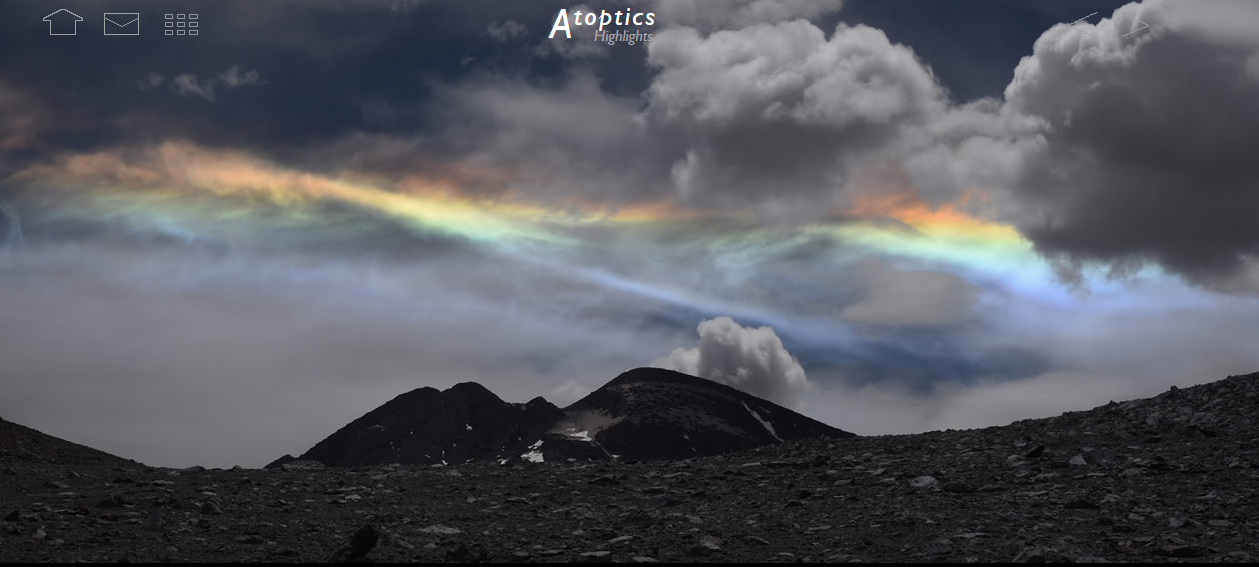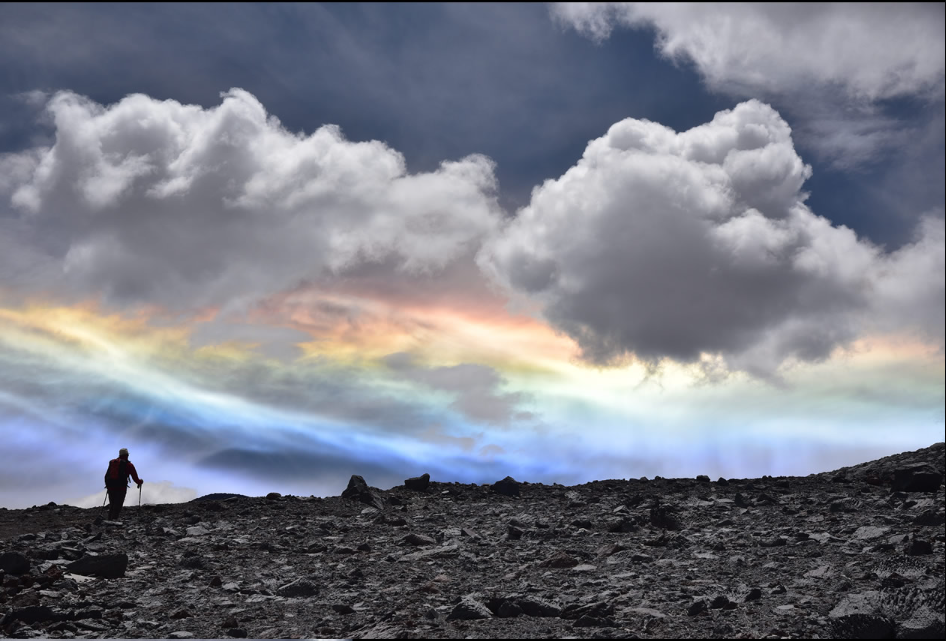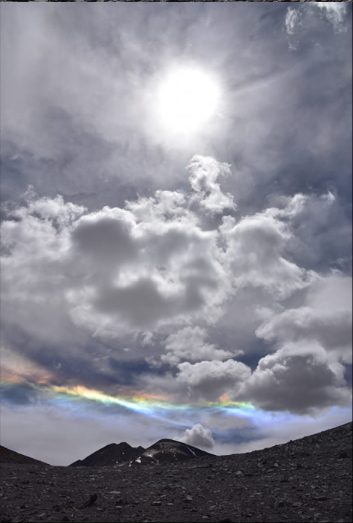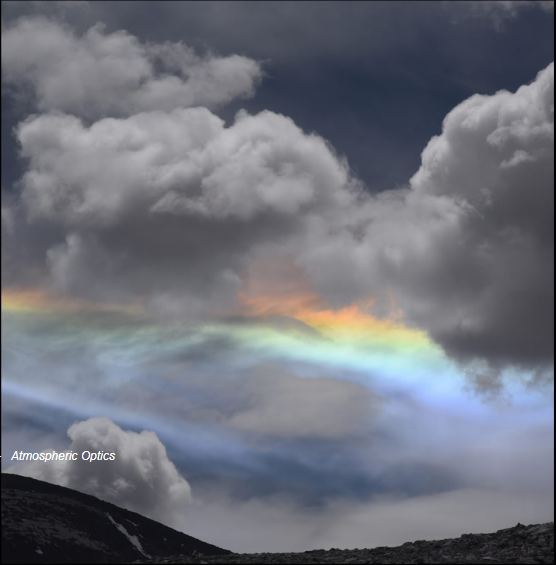Ojos del Salado Colours
Ojos del Salado Colours: A Spectacular Display of Atmospheric Optics
Have you ever witnessed a mesmerizing display of luminous colors veining the sky? Such a breathtaking phenomenon was captured by Peter Salenieks during his ascent of Ojos del Salado in the Atacama Desert, Chile. The extent and luminance of the colors were remarkable, surpassing anything he had ever seen before in the mountains. In this article, we will delve into the captivating spectacle of Ojos del Salado colors and explore the science behind this atmospheric optics phenomenon.
The Enigmatic Colors
At first glance, one might mistake the vibrant colors for iridescent clouds. However, these colors possess a unique structure and brightness that sets them apart. The colors transition in a spectral order, starting with reds at the top and progressing through orange, green, and finally blues. To gain a better understanding, let's take a wider angle view. What we discover is that these colors actually form a band located far beneath the high sun.
Unveiling the Circumhorizon Arc
The source of these captivating colors is none other than a circumhorizon arc, also known as an ice halo. This optical phenomenon occurs when sunlight passes through ice crystals suspended in the high cirrus clouds above lower cumulus clouds. The cirrus clouds consist of streaks that glow in spectral colors as their crystals glint. The lower patchy cumulus clouds play a role in blocking the halo, resulting in fragments that render it enigmatic and exceptionally beautiful.
The Role of Optically Perfect Ice Crystals
For a circumhorizon arc to form, optically near perfect ice crystals in the form of hexagonal plates are required. These ice crystals naturally align horizontally as they drift downwards within the cloud's air currents. Contrary to popular belief, these crystals do not fall from the cloud but rather make up the cloud itself. As sunlight enters a vertical side face of the crystal and exits through the lower face, it undergoes double refraction. This effectively acts as a 90-degree prism, dispersing the sunlight colors widely and purely.
A Kinship with the Circumzenithal Arc
The circumhorizon arc is closely related to another captivating atmospheric optics phenomenon known as the circumzenithal arc. While the circumhorizon arc forms when light enters the top face of the ice crystal and exits through a side face, the circumzenithal arc occurs when light enters the top face and leaves through the bottom face. Both arcs share the common feature of producing stunning displays of spectral colors, adding to the awe-inspiring beauty of the sky.
A Natural Masterpiece
The Ojos del Salado colors provide a glimpse into the intricate workings of atmospheric optics. As we witness this natural masterpiece, we are reminded of the delicate interplay between sunlight and ice crystals, resulting in a breathtaking display of vibrant colors. The combination of optically perfect ice crystals, high cirrus clouds, and lower cumulus clouds creates an ethereal scene that captivates all who have the privilege of experiencing it.
A Reminder of Nature's Wonders
The spectacle of Ojos del Salado colors serves as a reminder of the boundless wonders that nature has to offer. It encourages us to pause and appreciate the intricate beauty that surrounds us. From the towering mountains to the delicate ice crystals, every element plays a part in creating this awe-inspiring phenomenon. Let us cherish these fleeting moments and marvel at the enchanting displays that nature presents to us.
In conclusion, the Ojos del Salado colors are a sight to behold. The vibrant hues veining the sky reveal the presence of a circumhorizon arc, formed by optically perfect ice crystals in high cirrus clouds interacting with lower cumulus clouds. This atmospheric optics phenomenon showcases the mesmerizing interplay between sunlight and ice crystals, resulting in a stunning display of spectral colors. As we gaze upon this natural masterpiece, we are reminded of the beauty and complexity that exists within our atmosphere. So, next time you find yourself in the presence of such awe-inspiring colors, take a moment to appreciate the wonders of our natural world.

Peter Salenieks - "I took these photos recently, during an ascent of Ojos del Salado in the Atacama Desert, Chile. The extent and luminance were remarkable greater than anything love seen before in the mountains." Images ©Peter Salenieks, shown with permission significantly


Luminous colour tendrils vein the sky.
Iridescent clouds? No, they are too bright. Too colour structured. Their colours change in spectral order from reds at top through orange and green to blues. The wider angle view at left tells us more. The colours are in a band far beneath a high sun.
A circumhorizon arc. An ice halo. Sunlight glints through ice crystals floating in the high cirrus cloud above the lower clumpy cumulus. The cirrus is in streaks that glow in spectral colours as their crystals glint. The lower patchy cumulus helps also to block the halo. These fragments of the complete halo render it enigmatic and exceptionally beautiful.
Circumhorizon arcs need optically near perfect ice crystals in the form of hexagonal plates. The plates naturally align horizontally as they drift slowly downwards in the cloud's air currents. They do not fall from the cloud as many accounts would have you believe - they are the cloud!
Sunlight enters a vertical side face and leaves the lower face. The double refraction through
effectively a 90 degree prism disperses the sunlight colours widely- and purely.
The circumhorizon arc is closely related to a circumzenithal arc. To form the latter, light enters the top face and leaves through a side face.


Note: this article has been automatically converted from the old site and may not appear as intended. You can find the original article here.
Reference Atmospheric Optics
If you use any of the definitions, information, or data presented on Atmospheric Optics, please copy the link or reference below to properly credit us as the reference source. Thank you!
-
<a href="https://atoptics.co.uk/blog/ojos-del-salado-colours/">Ojos del Salado Colours</a>
-
"Ojos del Salado Colours". Atmospheric Optics. Accessed on November 26, 2024. https://atoptics.co.uk/blog/ojos-del-salado-colours/.
-
"Ojos del Salado Colours". Atmospheric Optics, https://atoptics.co.uk/blog/ojos-del-salado-colours/. Accessed 26 November, 2024
-
Ojos del Salado Colours. Atmospheric Optics. Retrieved from https://atoptics.co.uk/blog/ojos-del-salado-colours/.